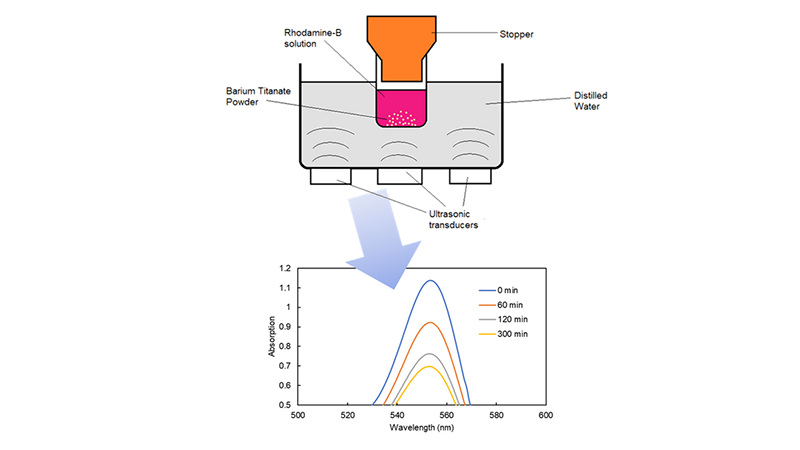In Spring 2023, we asked students to apply for summer placements of up to three months, working with academics in our Centre. Our aim was to enhance the University experience and provide an enriching opportunity for undergraduates in our Faculty.
We designed the scheme to give students a first-hand experience of academic research, giving them insight into research across different disciplines and departments. It also gave project supervisors a chance to explore new collaborations in the Centre as well as resources to explore high-risk proof of principle research.
This year, we awarded two placements to students in the Department of Chemical Engineering:
- Haider Raja, supervised by Dr Jose Exposito and Dr Hamideh Khanbareh
- Himmat Sohal, supervised by Dr Ming Xie and Professor Semali Perera
A study in the degradation of Rhodamine-B catalysed by Barium Titanate - Haider Raja

This project studied the degradation of Rhodamine-B catalysed by Barium Titanate (BaTiO_3), a known piezoelectric material, in two different forms:
- as a powder
- in lattice configuration
I investigated how different stirring and ultrasound conditions activated the catalyst to degrade the pollutant. It took 300 minutes to reach maximum degradation of Rhodamine-B, 39% when using the lattice activated with ultrasound. In addition, the lattice was reactivated several times showing high degradation levels. The experiments demonstrate that BaTiO_3 activated with ultrasound is a potential alternative for the degradation of persistent pollutants.
Extracting ions from lithium brine - Himmat Sohal

This project aimed to expand the scope of extraction from lithium to other ions found in the borehole sample located in the Weardale region. The project was successfully completed through the following objectives:
- identifying ions that are viable to extract
- comparing the best technologies to extract them
- designing a process to incorporate these new technologies
- analysing the economic feasibility of creating this process